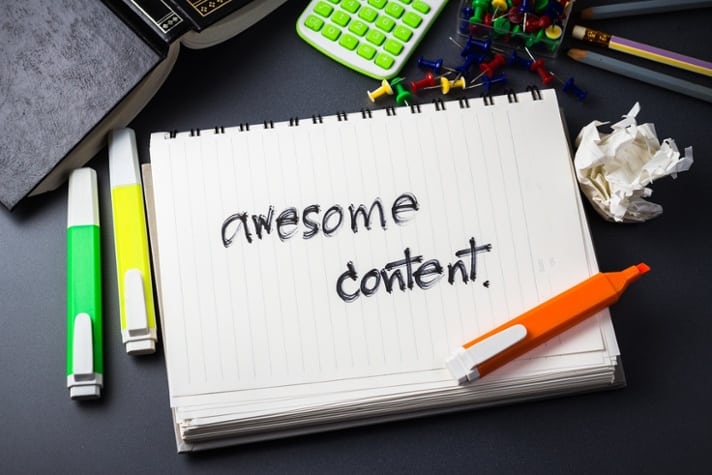Managing a content development project involves many steps and depends on a reliable team to support the project goal. Often, a new project starts out as a fabulous idea, birthed by people passionate about the end result. Once the idea has been formed, however, managers can encounter roadblocks to success. On a daily basis in educational settings, new situations pop up that require problem solving and expert thinking. Let’s look at what it takes to work with an educational content developer.
For example:
A major publishing house wants to update instructional materials to reflect a new scientific discovery. A series of textbooks must be rewritten with a very tight deadline. Some existing content will remain in place, while outdated information will be replaced with new content based on the latest scientific research. Project managers begin to vet in-house writers, only to discover that they are overwhelmed with existing deadlines and cannot give this new project the attention it needs for several months. It is imperative that the educational materials are updated immediately — schools and institutions rely on this publisher for high-quality materials and will be placing orders for the upcoming school year in just a few months. What should publishing executives do?
Selecting a flexible and experienced content developer is a critical first step. After committing to a vendor, how can clients ensure that the project will go smoothly? Use the process of project onboarding to map out the project scope, ask important questions, set up quality checkpoints, and consider the contract. Utilizing the onboarding process will save time, money, and stress as the project enters the development phase.
Identify Project Scope
One of the benefits of hiring a custom content developer is the ability to produce a unique product. A partnership forms to create something that does not currently exist in the educational market. An innovative vendor with the ability to listen carefully works with the client to identify the project scope. To determine the project scope, expect a vendor to clarify several details, including:
- The specific skills and knowledge the project communicates to the intended audience.
- The exact breakdown and desired format of all components of the deliverable
Ask the Right Questions Before Project Launch
A project can seem deceptively simple in the idea phase. But, many moving parts are assembled to create the final product. Before launching the project, be sure to ask the critical questions, such as:
- Who will write the text? Are they experts in the content area? How are contractors screened?
- Where will images and graphics be sourced? What are the schedule and workflow? Which parties are responsible for maintaining the schedule?
- Does the development schedule include deadlines for all aspects of the project workflow, including writing, editing, adding images, reviewing, and revising? Do the deadlines allow enough time for each step?
- What is the revision process? What criteria are available to use as quality checkpoints? Are review timelines sufficient for all parties to complete a thorough review?
- Is the option in place for a calibration round — a small set of deliverables to be presented for feedback — to ensure the vendor is meeting expectations?
- How often, and in what format, will status updates occur?
- Who is responsible for maintaining quality?
- How will final deliverables be submitted?
Utilize Strategies to Maintain Quality
Moving from the idea phase into the development phase requires careful planning and collaboration. A great developer embeds quality checkpoints into the project schedule and ensures that all stakeholders have a say in what the final product will look like.
All parties involved in the development schedule should be able to check items against what the expectations are for each component of the deliverable.
Asking specific questions before signing a contract clarifies roles and responsibilities for
all parties and highlights possible conflicts before they arise. Ensure that all stakeholders are clear by breaking down components of the deliverable. Examine the budget and discuss scenarios where deliverables could cause the cost to fluctuate. Ask specific questions during the negotiation process, such as:
- Will additional costs be associated with adding images to the deliverables?
- What are the rates for all deliverable types (including art)?
- Do the deliverables have any open-ended aspects that could incur additional costs?
- What are the terms of payment? Are the billing triggers structured in a way that gives the client sufficient time to review deliverables?
Educational content is updated constantly to ensure that all types of learners have the best resources possible. Educational settings that need new materials produced work together with flexible and qualified custom-content developers. At the core of that relationship should be intentional communication. Find a vendor that will consider the critical details and get answers to the important questions during the project onboarding process. Taking time at the start of a project to identify a shared understanding will save significant time and resources as the project unfolds.




